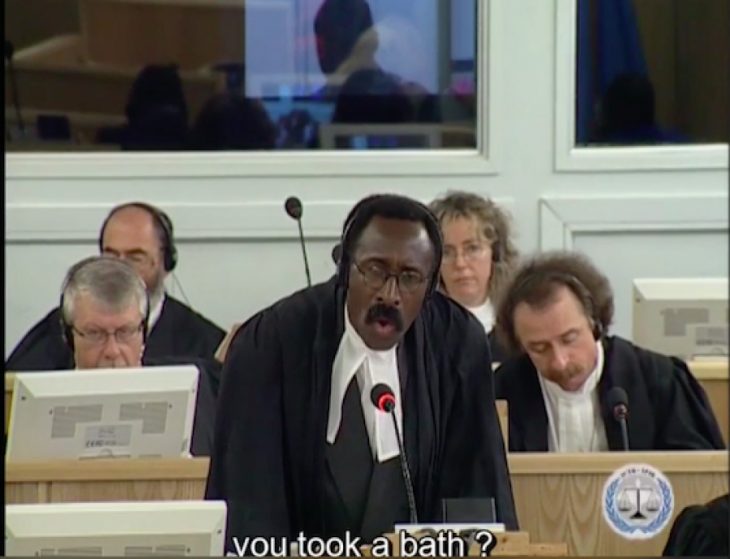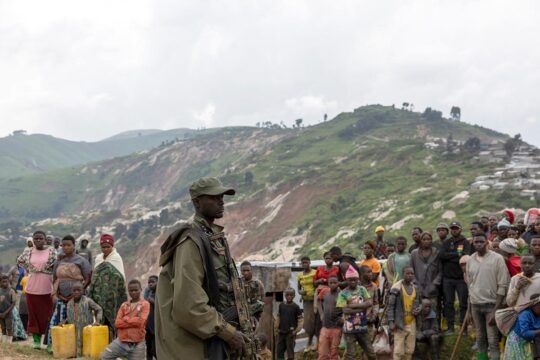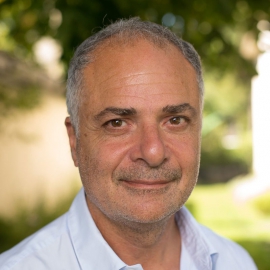It was the longest, most expensive and possibly most failed trial in international justice. The so-called “Butare trial” that ended less than a year ago was full of mistakes, dysfunctions and inadequate behaviour at the International Criminal Tribunal for Rwanda (ICTR), to the detriment of the victims. Here is the autopsy of a resounding failure, at the end of which the Appeals Chamber recognized there had been prejudice… to the genocide perpetrators¨!
This article is co-published by Le Monde.fr and JusticeInfo.net
Justice! At last, after so much killing and so much suffering. At least that was the hope of a certain young woman from Butare in southern Rwanda. At 15, she lost all those close to her in the anti-Tutsi genocide, some 60 members of her family including her parents. She herself only survived by a miracle. So when investigators from the International Criminal Tribunal for Rwanda (ICTR) came to find her, she agreed to testify, including about the multiple rapes of which she was victim. The Court promised her that her identity would never be revealed and she is referred to as “Witness TA” in ICTR documents. Her testimony was crucial, because she directly implicated Arsène Shalom Ntahobali, 24 at the time of the events, head of the Interhamwe killers in that region. Arsène is the son of Pauline Nyiramasuhuko, who was Minister for Women and Family Affairs (!) and, in a tragic irony, the main instigator of the genocide and campaign of rape in Butare province.
The trial opened in June 2001 before the ICTR and was supposed to be exemplary. It was the biggest trial ever organized by international justice on the genocide of Tutsis in Rwanda. Six people were in the dock accused of various counts of genocide and crimes against humanity, including former minister Pauline Nyiramasuhuko, her son Arsène Shalom Ntahobali, two ex-mayors, a prefect and a police officer. The trial aimed to show how, led by the Minister for Women, five men planned and carried out the genocide in this province which had up to then refused to commit the irreparable. The trial also aimed to show the systematic nature of the rapes, which numbered 250,000 across Rwanda during the 100 days of the genocide, according to the Tribunal.
But the trial was anything but exemplary. There were more and more dysfunctions. The first problem was the threat to the security of witnesses, to whom the Tribunal had nevertheless promised that their identity would be protected. The identity of “TA” was revealed and her life put in danger. I met “TA”, whose real name is Espérance, in 2003, while doing a report for ARTE and Swiss francophone TV with Gonzalo Arijon, entitled Rwanda: une justice prise en otage (Rwanda: justice taken hostage). She took me to her family home, of which only a few stones were left standing, and told me how her life was turned upside-down when she returned from the Tribunal. “When I came back home to Rwanda, my neighbours said I had betrayed them,” she recounted. “When I go to sleep at night, I do not know if I will wake up in the morning. Someone can come here and kill you at any time.” For years, the Rwandan government and the ICTR have been putting responsibility on each other for protecting witnesses after they testified.
Then came the second malfunction, the most traumatic episode for Espérance and in many ways the most scandalous in the history of the ICTR. Kenyan lawyer Duncan Mwanyumba was cross-examining Espérance, and his inappropriate questions provoked laughter from the three judges but nevertheless obliged her to answer. Duncan Mwanyumba asked Espérance how many clothes she was wearing before she was raped, and then when she had last taken a bath, thus implying that she was being provocative but was too dirty to have been raped. He also asked her how many times Arsène Shalom had raped her and if he was circumcised (see video).
Extract from the film "Rwanda: une justice prise en otage", produced by G. Arijon and P. Hazan, ARTE/RTS, 2003
To add to Espérance’s bad luck, her courtroom torture came at a time when the Rwandan government wanted to discredit the ICTR, because it thought the ICTR Prosecutor, after investigating genocide suspects, would also prosecute crimes of revenge committed by people close to the Kigali regime. The lawyer’s misplaced words to Espérance were manna from heaven for the Rwandan authorities.
And so through no fault of her own Espérance, who only wanted justice for her family, was successively put at risk by the ICTR when her identity was revealed, re-traumatized by an aberrant and brutal cross-examination, and then used in a political game that had nothing to do with her. The public airing of the violence she had suffered destroyed her relationship at the time.
The third and fourth malfunctions
In addition to the case of Espérance, the third dysfunction of the ICTR concerns the thousands of women rape victims who survived the genocide. Some estimates suggest that two-thirds of them were infected with HIV-AIDS during their rape. But the rules of international justice had been drawn up by Western jurists without taking account of the realities of a poor country ravaged by the genocide. Hence an absurd situation where ICTR Accused persons had a right to health care in a jail that took care to meet international standards, whereas no provisions had been made for their victims. So the genocide suspects infected with HIV could get antiretroviral medical treatment and a balanced diet, while their victims – mostly now widows – were left without care, trying desperately to survive in a country struggling to get back on its feet after the terrible experience of the genocide.
The fourth dysfunction was the extreme slowness of the judicial proceedings, even according to the standards of international justice. Arsène Shalom Ntahobali, Pauline Nyiramasuhuko and the four other Accused had been arrested between 1995 and 1998, as they were hiding out in Belgium, Kenya and Burkina Faso. The trial of the “Butare Six” only started in 2001 and finished in 2011, even before the start of the Appeals hearings! The accused therefore spent some 15 years in preventive detention, which caused Fausto Pocar, presiding judge of the Appeals Chamber, to say in December 2015 that the right of the accused to be tried within a reasonable period of time had not been respected. As a result of this “prejudice” suffered, the Court decided to reduce the sentence for “conspiracy to commit genocide, genocide, extermination and incitement to commit rape” from life to 47 years’ in jail for Pauline Nyiramasuhuko and her son, as well as a third Accused. A fourth also got his sentence reduced and the other two were freed after some 20 years spent in preventive detention.
And so it was that the last ICTR trial closed last year, before the Tribunal itself closed its doors. This trial, with all its errors and malfunctions, was emblematic of an international justice still seeking its path and which, in its defence, had almost no precedent to rely on. When the Tribunal was created in 1994, the International Criminal Tribunal for the former Yugoslavia (ICTY), set up a year earlier, was also taking its first steps and the military justice of the Nuremberg trials was long past. As Prosecutor Carla del Ponte says in Rwanda: une justice prise en otage, “this justice remains abstract for the victims. They had to testify at the Tribunal in front of the main architects of the genocide, who were well fed and lived in a pleasant prison, whereas they, the victims, did not have a right to any compensation or reparation. At the end of the day, they considered that this justice which was supposed to be for them was an injustice”.
This was indeed the high price paid by Espérance and many other victims in the slow and difficult construction of international criminal justice.







